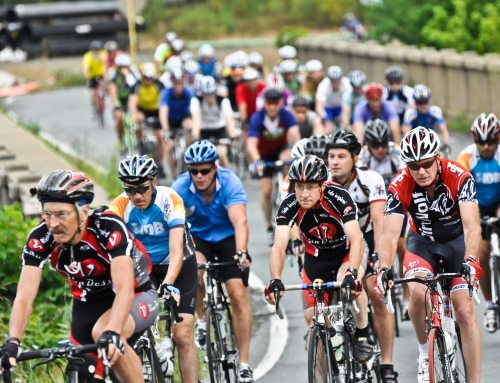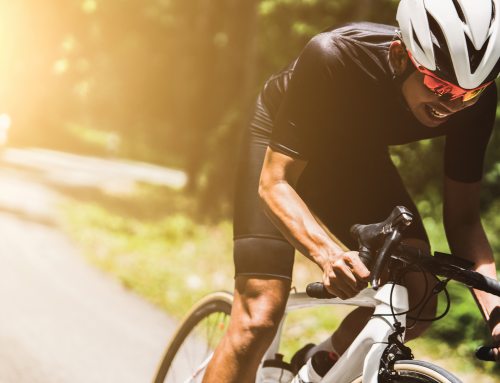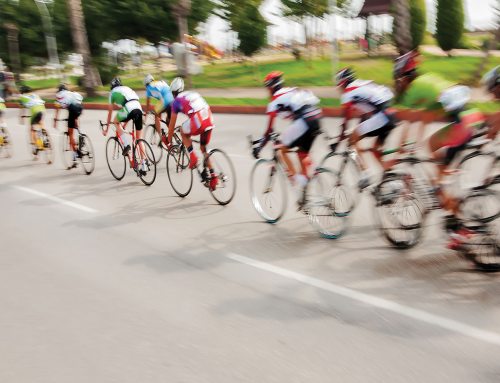By Thomas Henson Jr.
Whether you’re out on a family outing or a long-distance training ride, the last thing you expect is a close encounter with a motor vehicle. But it happens. My law firm handles dozens of North Carolina bike accident cases each year—this is a problem we live and breathe every day. One thing we’ve learned is that whether you’re the victim or a witness to an accident, the shock can be enough to scramble your thought processes. Here are the 7 things you need to do the day of the incident…and one important thing you should do today.
1. Get yourself, or any injured person, off the road. A rider on a bike is vulnerable to motorists, but a person lying on the ground is virtually invisible and doubly at risk. If you believe that the person has a neck or back injury, don’t move him unless his life is in danger. Instead, find a way to block the lane and protect the injured person.
2. Call 911. Stay as calm as possible. That may be difficult, especially if you’re in pain or if you have just seen someone fly head-first onto the pavement. Be prepared to give your location, as well as a brief account of what happened, including how many people were involved and hurt.
3. Reassure the injured person that help is on the way. Encourage the injured cyclist to lie still. A person with a head injury may not understand what happened, and may try to get up and walk…possibly straight out into traffic.
4. Get the driver’s identification information. Ask to see the driver’s ID, and take a photo with your cell phone. Take photos, too, of the driver’s insurance information and license plate.
5. If you’re a witness, talk to first responders. The emergency response crew will want to know the mechanics of the injury, so try to recall as many details as possible. Was the cyclist hit from behind or from the side? Did she land on grass or on pavement? The more details you can recall, the better the treatment the injured person will receive.
6. Encourage witnesses to wait for the police. If they cannot wait, get their contact information so that their statements can be taken later.
7. Take photos of the accident scene. Some important things to document include damage to the vehicle, damage to the bike, skid marks on the road, and a long view of how the road looked at the location of the accident.
What You Can Do Today
Check your car insurance policy to see how much Uninsured & Underinsured Motorist coverage you have.
When a cyclist is hit by a car, the cyclist’s medical expenses are covered by the motorist’s car insurance. But what if you sustain catastrophic injuries, but the driver has no insurance or not enough insurance…or what if you’re injured by a hit-and-run driver. Then what happens? Well, that’s when your own uninsured/underinsured coverage kicks in.
In North Carolina, every driver is required by law to carry a minimum of $30,000 of car insurance coverage for bodily injury. But let’s face it—injuries suffered by a cyclist hit by a car are often significant, which means huge medical expenses, often far higher than $30,000. If you end up with $250,000 in medical costs, and the driver’s insurance pays out for the minimum coverage, you’ll still have to cover the remaining $220,000.
That’s where your own underinsured motorist coverage becomes important—it helps you even though you were on a bike at the time of the accident. So if you have $1,000,000 in underinsured motorist insurance, then in the above example, where you owe a remaining $220,000 in healthcare costs, your own insurance will cover all your bills, as well as provide compensation for pain and suffering for your catastrophic injury.
Underinsured motorist coverage only helps if the person who hit you has some insurance. Sadly, not everyone follows the law: 14 percent of North Carolina drivers don’t have any insurance at all. Uninsured motorist insurance covers that gap, and is also applied if you are the victim of an unidentified hit-and-run driver.
Of course, you can always file a lawsuit against the driver to try to recover your medical expenses, but not every motorist has assets. As they say, you can’t get blood from a stone. Yes, contact an attorney to explore all possibilities, but you should also protect yourself before the accident happens. Contact your insurance agent and sign on for as much uninsured & underinsured motorist coverage as you can afford. The cost will vary depending on your individual circumstances, but if you’re an avid cyclist, you’ll ride more confidently knowing you have this extra financial shield. Insurance is complicated, so if you are interested in learning more about this important topic, feel free to visit our website to download a free copy of the Consumer’s Guide to Insurance from the NC Department of Insurance at http://www.lawmed.com/pdf/consumer-guide-to-auto-insurance.pdf.
Ride Safe!
# # #
Thomas Henson Jr. is an avid cyclist, and finds much happiness in bike rides with his family and friends. He leads the complex injury litigation department of HensonFuerst Attorneys. He can be contacted at ThomasHenson@lawmed.com.






